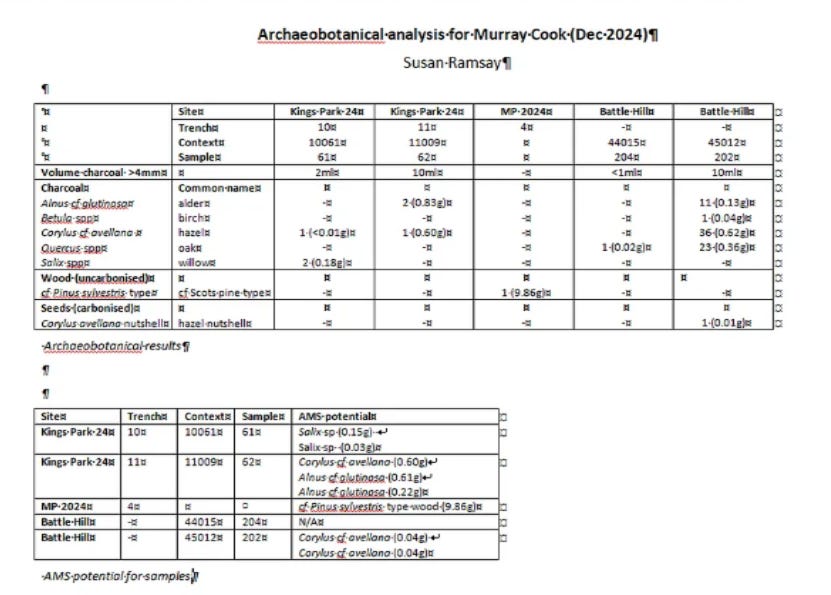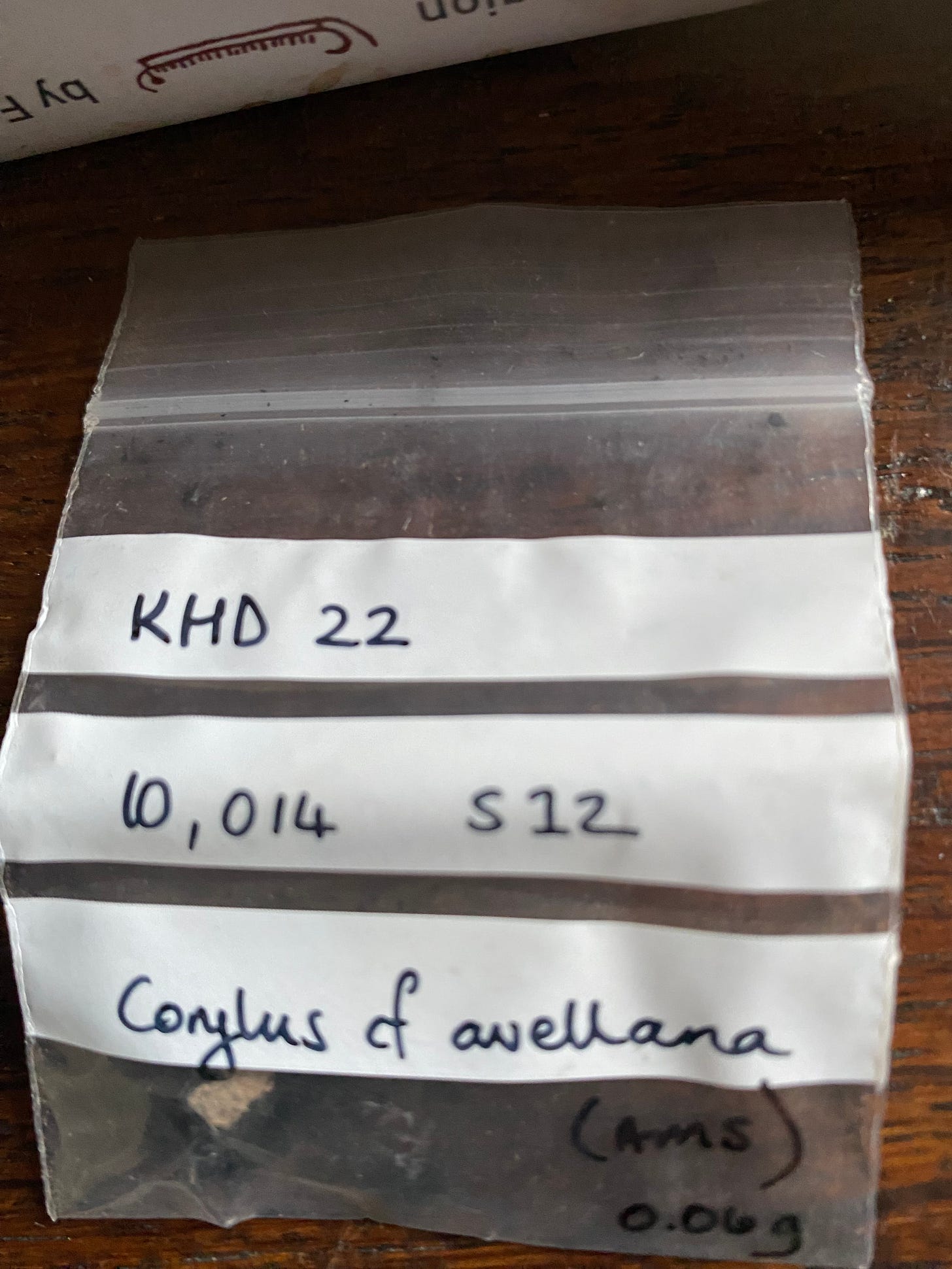Late last year I wrote about the various technical elements and stages I go through over the winter in writing up and today I want to talk about an incredibly important but very technical bit. Before that I want to stress the whole point of digging is to tell people what we found, now yes I could do that on Port Street on Saturday night after a few pints (but I’d probably be arrested) and yes the this blog helps and so does the column in the Stirling Observer. But a lot of this might be dismissed as hearsay…where is the evidence? So there are two gold standards….the first is publication in a journal of record, what we did, when we did it, what we found and what does it mean. This allows scholars from across the world and over time to reference my works and to put it into context. I regularly refer to the work of predecessors from the 18th and 19th centuries. These are refereed so all my wild speculation is normally whittled out or calmed down.
The most prestigious of these publications in Scotland is the Proceedings of the Society of Antiquaries of Scotland and most of their backlog is free to use and you could loose a lifetime in these volumes. The second gold standard is even more technical, its is the archive, the nuts and bolts of the publication, all the photos and drawings, the notes and the technical reports. These are important as they will allow future researchers to question my results even if I am long gone. This is why museums and archives are so important, I mean yes archaeology is important but they preserve so much more, the very essence of what it is to be Scottish or from Stirling. So of course this ends with a plea to use the Smith and Council Archive service and to let your elected representatives know how much they are valued!
Charcoal Identification
The backbone of any publication and a key component of the archive is dating, when was the site? Some of you will have dug with me and some will have experienced the thrill of discovery: a bit of Roman pot or a struck lithic, to have touched something ancient, to rediscover the lost and forgotten.
A 2000 year old rotary quern!
But the most important discoveries are not the objects. Objects can lie in the soil for millennia, they might not relate to the site, they might reused or residual. No, what we really need is something to tie the site to a date….. the remains of their fires, the charcoal they threw out when they cleared out the hearth and we need lots of it. This is not because of the technical requirement of radiocarbon dating (which measures the relative proportions of radioactive carbon to non-radioactive carbon) as you can date a grape seed. Rather its to do within being confident about when that grape seed came from. Was it a Roman soldier who after collecting taxes at Mote Hill spat it out on the ground? Or was it a picnic in the 1970s before seedless grapes? The thing is that charcoal the size of a grape pip can travel in a worm’s stomach and worms as we know get everywhere. So you need to be confident that its not intrusive or residual.
Dr Susan Ramsay……charred plant remain expert extraordinaire!
So enter stage left our hero of the week…one of Scotland’s leading experts who lives in Falkirk, Dr Susan Ramsay.
So when I dig things up I pay attention to charcoal, the more we have the better as the less likely it is to residual or intrusive. We are also better to use short lived plants like birch or hazel rather than oak or elm. With these latter trees the wood might be hundreds of years old when its ends up in the site. In order to confirm all of this I send bags of charcoal and soil to Susan.
Now as an aside this always leads to an interesting conversation in the post office. I always send the samples recorded delivery and they always want to know what’s in the parcel. Hmm….charcoal and soil I say with a nervous smile. An eyebrow is then raised and a further question is asked….what is its value. This presents me with an ethical quandary, what do I say? Technically it is both worthless dirt and a priceless antiquity, a unique record of life in Scotland and the distilled accumulation of hours of my and your time. But can I reduce the love and passion of my life to mere pounds, shillings and pence and if so what price? But the post office do not deliver priceless antiquities. So a lie of omission is my best bet….technically worthless I reply. A cold sweat breaks out…will this count against me at the pearly gates? Is there a patron saint of archaeologists to pray for divine intervention. Or are the gods of archaeology older and darker…..Old Testament perhaps or even worse Lovecraftian? Banished long ago to the cold dark beyond (Fife?)…will they sneer at this spec of worthless humanity and demand sacrifice? £2.80 is the reply and the queue moves on as the parcel is thrown into the sorting bag and hopefully winds its way to Falkirk without tempting Cthulhu.
Leaving all of this Kantian dilemma aside…..I now wait with baited breath and in due course the samples comes back, with a report and a bill.
This tells me species and what is worth dating and what might not be. It also reveals just how much charcoal there is and why even if technically I could get a date why it might not be reliable. This can all get a bit technical but in essence a single small bit of oak is always a bit like the grape seed; or you never date pine from an archaeological site in forestry plantation; and you never ever date sycamore as its an imported species!
Processed and identified charcoal!
At present various samples from the table above are in Belfast (the cheapest in the UK) being analysed and I will have the results in 10 weeks or so. This will cost £315 plus VAT…..as with all costs, its a lot if you don’t have it but to me this is incredibly cheap and unimaginable to archaeologists from the 60s or 70s. Each one will unlock new interpretation, reveal the unknown and slowly but surely inch Scotland’s story forward. Often the sites we are digging at have never been dug at, we know nothing about them, round Stirling most archaeological sites were surveyed once in the 1950s and then left alone (like the one above Keir Hill of Dasher (KHD))…a date gives a hook. Keir Hill of Dasher might have dated to any point within a 2000 year period and for 70 years we ignored it. We now know it was built in the Roman Iron Age and then reused in the Viking Age. Amazing. All of course only possible with your support…so pat yourselves on the back.
Conclusions
An afterthought….this stuff is all quite easy to do, time consuming yes, lots of permissions needed yes, very often cold and muddy…hell yeah, but we find a site, get the permissions, dig a hole, then another hole and date the stuff that comes out. It is an endlessly repeatable process. All of that work to get a tiny new fact…but remember the fun that we have getting it…its not the destination its the journey! And there is always a space for you.
Have a question? Get in contact!







Great work Murray. Your Post Office experience had me giggling.